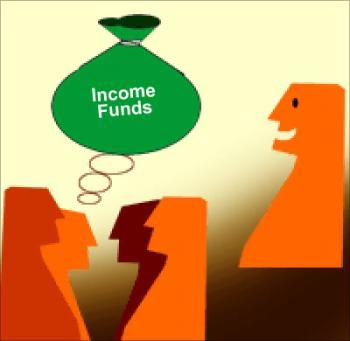Dipta Joshi
Those getting into debt instruments like short-term funds, ultra short-term funds and income funds may need to extend their investment horizons or pay higher exit loads. The past couple of months have seen 16 such funds either raising their exit loads or increasing the scheme's lock-in period.
Some, like SBI Dynamic Bond Fund, Axis Short-Term Fund and Principal Income Long-Term Fund , have raised both the exit load and minimum period of investment.
ICICI Prudential Regular Savings Fund and Kotak Bond Short-Term Fund have increased their period of investment; IDFC All Seasons Bond Fund has raised the percentage of load (see table for details).
Lock-in periods differ, depending on the fund. Typically, ultra short-term funds have a 15-day lock-in. Short term and income funds have a minimum six months of lock-in.
...
Exiting fixed income funds? Read on
Exit load is levied on the net asset value as on the day of redemption. Assume you need to redeem your investment of Rs 50,000 purchased at an NAV of Rs 10. If the NAV is now Rs 11, you would have earned Rs 55,000 on your investment. With a one per cent exit load on the NAV, Rs 550 is deducted and you will get Rs 54,450.
"Currently, managers are taking longer-term duration calls and prefer having investors whose investment horizon matches their own portfolios to ensure the fund's stability," says Nandkumar Surti, CIO, J P Morgan Mutual Fund. The higher exit loads will act as a deterrent to investors, as the increase in exit load will lower the yield in the hand of investors.
In a rising interest rate scenario, fund managers take advantage of upward moving rates by investing in shorter term corporate bonds and government securities.
...
Exiting fixed income funds? Read on
But with the interest rate cycle peaking, interest rates are expected to be stable over the next few months before they move downwards.
In such a scenario, medium to long investment options like short term and income funds are preferred, because they not only lock investments at a higher rate, but also for a longer duration.
"However, many investors may wait just long enough to take advantage of the accruals gained and the capital appreciation, as a result of the falling interest rates, and move out immediately. This impacts the fund's overall performance, with the remaining customers taking a hit," says Amar Ranu, senior manager, research & advisory, Motilal Oswal Securities.
...
Exiting fixed income funds? Read on
One-year absolute returns from income funds have been 7.13 per cent, while that from the short-term funds category has been 8.57 per cent. In the same period, both diversified equity mutual funds and the Bombay Stock Exchange's Sensex gave negative returns of 21.39 per cent and 20.27 per cent, respectively. In such a scenario, fixed income products have been the investor's best bet.
The new exit load rates will apply only to new investors wanting to get into these funds.
Financial planners say investors would do well to consider the costs of exit, especially if the investor is likely to need the funds ahead of the lock-in period.
...
Exiting fixed income funds? Read on
These funds would be best suited for those with an investment horizon of a year or two. Else, even investors with surplus cash could look at these funds.
Income accruals within a year for those choosing the growth option will be considered short-term capital gains and one will have to pay according to one's tax slab.
Gains earned after a year will be considered as long-term capital gains (LTCGs) and one can claim 10 per cent without indexation or 20 per cent with indexation benefits on these. If one chooses funds with a dividend option, the fund has to pay a dividend distribution tax of 14.163 per cent.







article